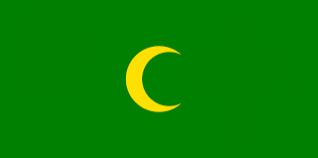Related Research Articles

Anatomically modern humans first arrived on the Indian subcontinent between 73,000 and 55,000 years ago. The earliest known human remains in South Asia date to 30,000 years ago. Sedentariness began in South Asia around 7000 BCE; by 4500 BCE, settled life had increasingly spread, and gradually evolved into the Indus Valley civilisation, which flourished between 2500 BCE and 1900 BCE in present-day Pakistan and north-western India. Early in the second millennium BCE, persistent drought caused the population of the Indus Valley to scatter from large urban centres to villages. Indo-Aryan tribes moved into the Punjab from Central Asia in several waves of migration. The Vedic Period was marked by the composition of their large collections of hymns (Vedas). The social structure was stratified via the varna system, which persists till this day. The pastoral and nomadic Indo-Aryans spread from the Punjab into the Gangetic plain. Around 600 BCE, a new, interregional culture arose; then, small chieftaincies (janapadas) were consolidated into larger states (mahajanapadas). A second urbanisation took place, which came with the rise of new ascetic movements and religious concepts, including the rise of Jainism and Buddhism. The latter was synthesised with the preexisting religious cultures of the subcontinent, giving rise to Hinduism.

A gazetteer is a geographical dictionary or directory used in conjunction with a map or atlas. It typically contains information concerning the geographical makeup, social statistics and physical features of a country, region, or continent. Content of a gazetteer can include a subject's location, dimensions of peaks and waterways, population, gross domestic product and literacy rate. This information is generally divided into topics with entries listed in alphabetical order.

Dhol can refer to any one of a number of similar types of double-headed drum widely used, with regional variations, throughout the Indian subcontinent. Its range of distribution in Indian subcontinent primarily includes northern areas such as the Jammu, Himachal, Punjab, Haryana, Delhi, Kashmir, Sindh, Assam Valley, Uttarakhand, West Bengal, Odisha, Gujarat, Maharashtra, Konkan, Goa, Karnataka, Rajasthan, Bihar, Jharkhand and Uttar Pradesh. A related instrument is the dholak or dholki. Dhols are amongst other events used in Indian wedding ceremony processions such as Baraat or Varyatra.

The Mughal emperors were the supreme monarchs of the Mughal Empire in the Indian subcontinent, mainly corresponding to the modern countries of India, Pakistan, Afghanistan and Bangladesh. The Mughal rulers styled themselves as Badshah or Shahanshah, a title usually translated from Persian as "emperor". They began to rule parts of India from 1526, and by 1707, ruled most of the sub-continent. After that they declined rapidly, but nominally ruled territories until the Indian Rebellion.

The Tibetan Buddhist canon is a loosely defined list of sacred texts recognized by various sects of Tibetan Buddhism. In addition to sutrayana texts from Early Buddhist schools and Mahayana sources, the Tibetan canon includes tantric texts. The Tibetan Canon underwent a final compilation in the 14th century by Buton Rinchen Drub (1290–1364).
This page is a list of geography topics.

Charas is a cannabis concentrate made from the resin of a live cannabis plant and is handmade in the Indian subcontinent and Jamaica. The plant grows wild throughout Northern India along the stretch of the Himalayas and is an important cash crop for the local people. The difference between charas and hashish is that hashish is made from a dead cannabis plant and charas is made from a live one.

The Western Regions or Xiyu was a historical name specified in Ancient Chinese chronicles between the 3rd century BC to the 8th century AD that referred to the regions west of the Yumen Pass, most often the Tarim Basin in present-day southern Xinjiang and Central Asia, though it was sometimes used more generally to refer to other regions to the west of China as well, such as Parthia and Tianzhu.

South Asian cuisine, includes the traditional cuisines from the modern-day South Asian republics of Bangladesh, India, Maldives, Nepal, Pakistan and Sri Lanka, also sometimes including the kingdom of Bhutan and the emirate of Afghanistan. Also sometimes known as Desi cuisine, it has been influenced by and also has influenced other Asian cuisines beyond the Indian subcontinent.
Pargana or parganah, also spelt pergunnah during the time of the Sultanate period, Mughal times and British Raj, is a former administrative unit of the Indian subcontinent and each parganas may or may not be subdivided into pirs. Those revenue units are used primarily, but not exclusively, by the Muslim kingdoms. After independence the Parganas became equivalent to Block/ Tahsil and Pirs became Grampanchayat.

Khichdi or khichri is a dish in South Asian cuisine made of rice and lentils (dal) with numerous variations. Variations include bajra and mung dalkhichri. In Indian culture, in several regions, especially in the northern areas, it is considered one of the first solid foods that babies eat.
Persianization or Persification, is a sociological process of cultural change in which a non-Persian society becomes "Persianate", meaning it either directly adopts or becomes strongly influenced by the Persian language, culture, literature, art, music, and identity as well as other socio-cultural factors. It is a specific form of cultural assimilation that often includes a language shift. The term applies not only to cultures, but also to individuals, as they acclimate to Persian culture and become "Persianized" or "Persified".
A belly chain or waist chain is the popular English term for the Indian jewelry called kamarband. The belly chain is a type of body jewelry worn around the waist. Some belly chains attach to a navel piercing; these are also called "pierced belly chains". They are often made of silver or gold. Sometimes a thread is used around the waist instead of a chain. The chain may be delicate and thin, or heavy and thick.
The Rawalpindi Gazetteer or Gazetteer of the Rawalpindi District 1893-94, is a comprehensive geographical, economic, social and cultural catalogue of Rawalpindi District. It was compiled and published in 1895 during the British period.

The Indian subcontinent is a physiographical region in Southern Asia, mostly situated on the Indian Plate, projecting southwards into the Indian Ocean from the Himalayas. Geopolitically, it spans major landmasses from the countries of Bangladesh, Bhutan, India, Maldives, Nepal, Pakistan, and Sri Lanka. Although the terms "Indian subcontinent" and "South Asia" are often used interchangeably to denote the region, the geopolitical term of South Asia frequently includes Afghanistan, which is not considered part of the subcontinent.

Alappat Sreedhara Menon, known as A. Sreedhara Menon, was an Indian historian from Kerala. He is best known as the State Editor (1958–68) of Kerala District Gazetteers (1961–1975). He served as registrar of the Kerala University from 1968 to 1977, before retiring in 1980.
Kamrup may refer to:

Shalwar kameez is a traditional combination dress worn by women, and in some regions by men, in South Asia, and Central Asia.
Burjor Avari (1938–2019) was a teacher of South Asian history at the Manchester Metropolitan University. He received an MBE in recognition of his work in multicultural education.

Khes is a thin cotton blanket cloth in the Indian subcontinent; it is a damask cloth used for blankets and winter wraps. Khes is generally hand-woven with coarse cotton yarns. Khes as a garment is a simple clothing item to wear loosely to cover the upper body by men in Pakistan and northwest India. Khes is an important cloth in the Punjab region, a region which is famous for its production and historically has been known for not only the production of Khes but also many other coarse cotton textiles, especially in the 19th and 20th centuries. Khes is a comfort object used in bedding, and is also usable as a cover.
References
- ↑ "Firozpur, Punjab District Gazetteer, 1983 edition". Archived from the original on 2012-01-09. Retrieved 2007-05-03.
- 1 2 Biswas, Kumud (July 6, 2003). "What A Gazetteer Is Not". Boloji.com.
- ↑ "Aurangabad, Maharashtra, District Gazetteer".